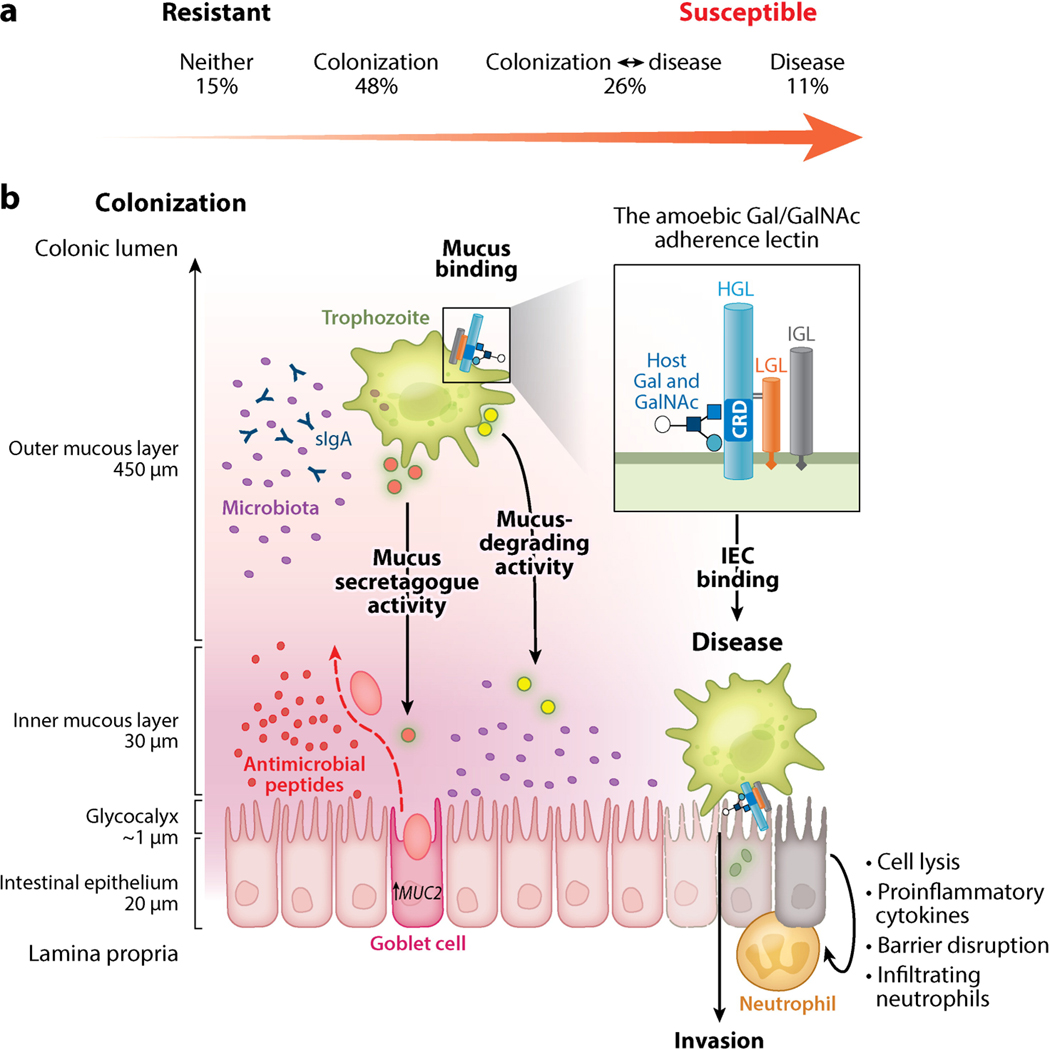Figure 1.
E. histolytica virulence depends on a dynamic interaction in the infected host. (a) Continuum of E. histolytica disease in a natural population. Analysis of diarrheal and monthly surveillance stool samples for E. histolytica detected four possible outcomes in the first two years of life: (1) no evidence of infection, (2) colonization with no E. histolytica–associated diarrhea, (3) diarrhea with prior asymptomatic colonization and/or subsequent asymptomatic persistence, or (4) E. histolytica–associated diarrhea with no previous colonization. This pattern reinforces the importance of both parasite and host factors in the outcome of an E. histolytica infection. (b) To establish infection, E. histolytica must bind and adhere in the host colon. Adherence is mediated by an amoebic lectin with a carbohydrate-recognition domain (CRD) that binds galactose (Gal) and N-acetyl-d-galactosamine (GalNAc) on host glycoconjugates with high affinity. The Gal/GalNAc lectin is composed of heavy (HGL), intermediate (IGL), and light (LGL) subunits. The CRD is located on the HGL, which also contains a putative intracellular signaling domain. HGL forms a disulfide bond with LGL. The HGL-LGL heterodimer can associate with the glycosylphosphatidylinositol-anchored IGL, but this subunit does not have a well-defined function (inset). Colonic mucin forms a dense polymeric gel over the intestinal epithelium, which trophozoites bind to with high affinity. Trophozoites also induce mucin secretion by goblet cells. In colonization, mucin binding mediates attachment and provides a nutrient source for E. histolytica. Mucin polymers may be degraded by amoebic proteases and glycosidases for nutrients, and the mucosal microbiota provides a nutrient source via amoebic phagocytosis. The transition from colonization to disease is marked by destruction of the mucin barrier. Mucus depletion may result from enhanced amoebic degradation and/or depletion of mucin stores by continual secretion during chronic infection. Other factors including coinfections, host diet, and disruption of the microbiota can also mediate mucus depletion. Mucus depletion exposes the intestinal epithelium to E. histolytica trophozoites. The amoebic lectin CRD binds to Gal and GalNAc on exposed intestinal epithelial cells (IECs) and the cell-associated glycocalyx. Adherence to IECs results in amoebic cytotoxicity and the release of proinflammatory molecules. Abbreviation: sIgA, secretory immunoglobulin A.

